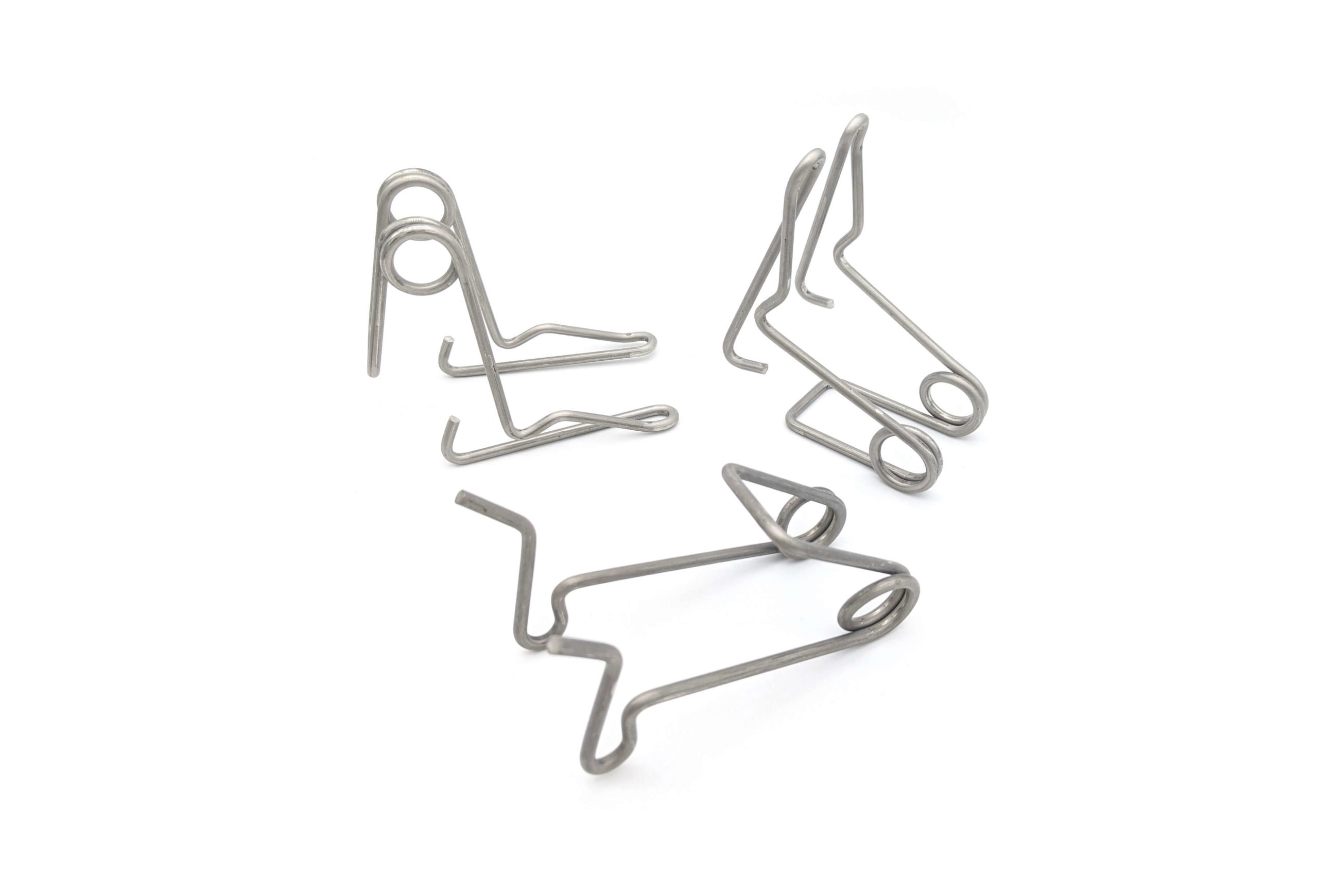Get unique, complex parts easily. No matter your requirements, Chaoyi Spring creates hard-to-produce coil springs and wire forms.
Let us help you create the custom wire form you need, from S-hooks and J-hooks to utility hooks and more.
We work closely with customers across a wide range of industries, helping them design and manufacture made-to-order parts.
Why choose Chaoyi Spring? We prioritize customer-focused collaboration, modern equipment and the latest technology to make your parts per print.
Find the information and guidance you need, from measuring a spring to learning about materials, placing an order and much more.
Low-torsion springs, often referred to as low-force springs, are essential components in various mechanical systems, playing a crucial role in maintaining stability, providing controlled movement, and ensuring smooth operation. Unlike


Low-torsion springs, often referred to as low-force springs, are essential components in various mechanical systems, playing a crucial role in maintaining stability, providing controlled movement, and ensuring smooth operation. Unlike conventional torsion springs that rely on high torque to achieve desired results, low-torsion springs excel in delicate applications where minimal force and precise control are paramount. This article will delve into the intricate design principles of these springs, their distinct advantages, and explore their diverse applications across industries. By understanding the intricacies of low-torsion springs, engineers and designers can harness their unique capabilities to enhance the performance and reliability of their mechanical creations.

Low-torsion springs, as the name suggests, are designed to generate minimal torsional force, which distinguishes them from their conventional counterparts. This low-force characteristic stems from their unique design features. They typically employ thinner wire gauges and utilize fewer active coils compared to their higher-torque siblings. This delicate construction enables them to exert gentle, controlled force, making them ideal for applications where excessive force could be detrimental.
One of the key advantages of low-torsion springs lies in their ability to provide precise control. They offer a controlled and predictable response to applied forces, making them perfect for delicate mechanisms. This characteristic is especially valuable in applications where even minute variations in force can significantly impact performance. For instance, in medical devices, where precision is paramount, low-torsion springs ensure smooth and accurate operation of critical components.
Furthermore, low-torsion springs exhibit exceptional sensitivity. They respond readily to even the slightest changes in applied force, making them ideal for sensing and feedback mechanisms. This sensitivity is particularly valuable in applications where small variations in force need to be detected and responded to promptly. For example, in automotive systems, low-torsion springs can be used in sensors that monitor crucial parameters like engine temperature or tire pressure, enabling timely adjustments and preventing potential issues.
Low-torsion springs are not confined to a single niche; they find applications across a wide spectrum of industries, showcasing their versatility and adaptability. Here, we delve into some prominent examples, highlighting their unique contributions:
In the healthcare domain, precision and reliability are paramount. Low-torsion springs meet these stringent demands, playing crucial roles in various medical devices. They are used in:
The delicate nature of these applications necessitates the use of low-force springs to avoid damage to sensitive tissues and ensure the safety of patients.
The automotive industry thrives on efficiency, safety, and performance, and low-torsion springs contribute significantly to achieving these goals. They are used in:
The ability of low-torsion springs to provide precise control, sensitivity, and reliable operation makes them essential components in modern automobiles.
The aerospace industry demands components that are not only precise but also incredibly durable. Low-torsion springs, with their ability to withstand harsh environments and extreme conditions, play a vital role in various aerospace applications, including:
The precision and reliability of low-torsion springs contribute to the safety and success of missions in the vast expanse of space.
Selecting the appropriate low-torsion spring for your application requires careful consideration of several key factors:
Consulting with a spring manufacturing expert can ensure that you select the ideal low-torsion spring for your specific needs, maximizing efficiency and reliability.
Low-torsion springs, often overlooked but incredibly valuable, are crucial components in numerous mechanical systems. They offer a unique combination of precision, sensitivity, and reliability, making them indispensable in industries like healthcare, automotive, and aerospace. By understanding their design principles and diverse applications, engineers and designers can harness their unique capabilities to elevate the performance and reliability of their creations. As we continue to explore the frontiers of innovation, low-torsion springs will undoubtedly play a significant role in shaping the future of mechanical design.
In conclusion, low-torsion springs are much more than just simple mechanical components. They are embodiments of precision, control, and reliability, driving innovation across a wide array of industries. As technology evolves, the demand for these delicate and powerful springs will only continue to grow, making them essential tools for achieving optimal performance and precision in mechanical systems of the future.
Browse some of the custom wire forms and springs that we manufacture. Don’t see what you need? We specialize in made-to-order products that meet your application requirements.
Visit Our GalleryNeed a custom wire form or coil spring? We make it work. Fill out the contact form and a representative will respond within 1 business day. If you have a PDF or CAD file, you can submit to request a quote.